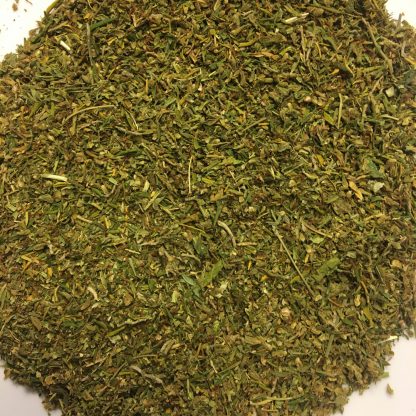Plant biomass is the organic material leftover after harvesting and processing. Hemp biomass contains the leaves and stalks of the hemp plant, which is harvested for its flowers and seeds. Hemp biomass has all kinds of uses. First, a quick refresher on hemp.
What is Hemp?
Hemp has been cultivated for thousands of years. The hemp plant is extremely versatile—CBD can be extracted from its flowers, milk alternatives, and oil can be produced from the seeds, and fibers for clothing and other textiles can be made from hemp biomass.
Hemp, also known as industrial hemp, is a member of the cannabis family. Marijuana is also a member of this family but is distinct from the hemp plant. THC is the compound found in marijuana that creates its psychogenic effects. Hemp is not bred for THC and, instead, features CBD, which does not create such effects.
The hemp plant is tall, skinny, and leafy. Long, narrow leaves are concentrated near the top of the plant. The bottom produces few branches. Plants can be tailored to suit different climates and even different seasons. Some hemp plants are hybridized to flourish in dry climates, while others are better adapted to wet climates.
Hemp plants are angiosperms, meaning they have both male and female parts. The entirety of the plant can be used. The hemp plant can be divided into five parts:
- Fibers
- Stalks
- Leaves
- Flowers
- Seeds
Many cultivators focus on nurturing a specific part of the plant, such as breeding the flowers for high CBD content. Regardless of which part the cultivator is breeding for, they still seek to sell as much of the plant as possible. Let’s look at the different types of hemp biomass.
What are The Different Types of Hemp Biomass?
The two different types of hemp biomass – CBD and fiber. Each is comprised of different parts of the hemp plant and used for different purposes.
CBD Hemp Biomass
CBD hemp biomass is made of just the flowers of the hemp plant. The flowers, or buds, are where virtually all of the cannabinoids are concentrated.
Technically, CBD hemp biomass isn’t actually biomass. The reason is the flowers are harvested and not leftover from the harvesting process. Hemp trim is more aligned with the actual definition of biomass.
The trim is the leftover organic material from trimming the leaves off of hemp buds. It contains enough CBD to be used in extraction processes to create non-flower CBD products.
Hemp flowers are referred to as CBD hemp biomass when the farmer is selling to a CBD extraction company. The CBD is extracted from the flowers and used to make CBD isolate, as well as the CBD oil contained in CBD vape cartridges.
The flowers are not considered biomass when they are grown to be sold to consumers as smokable hemp flowers.
Hemp Fiber Biomass
Hemp fiber biomass is the true hemp biomass. It includes the leaves and stalks that are left over after the flowers or seeds have been harvested.
As the hemp market currently stands, hemp fiber biomass does not have as much value as hemp flowers, trim, or seeds. The reason is most of the value of the hemp market comes from smokable hemp flowers and other CBD products.
Hemp fiber biomass can serve as raw material for a number of products, including:
- Biofuel
- Hemp paper
- Consumer textiles
- Industrial textiles
- Bioplastics
- Concrete
- And much more
Hemp fiber biomass would have been more valuable, though, if hemp was never looped in with the Marijuana Tax Act of 1937. Taxes were so high for growing hemp that it was virtually illegal, and it was officially made illegal through the Controlled Substances Act of 1970.
Just to give you an example of the potential production value of hemp – 75 to 90 percent of the world’s paper was hemp paper before the turn of the 20th century. The Hemp Farming Act of 2018 made hemp legal to grow again so long as it remained under 0.3% THC.
If you’re interested in the process of harvesting hemp biomass, check out the video below:
Final Thoughts
Biomass has an extremely bright future. The CBD market is already a billion-dollar industry and it shows no signs of slowing down. Within the next decade, innovative companies will figure out economical ways to make hemp a primary raw material in their production processes.
Hemp fiber biomass has the potential to help us switch from fossil fuels to renewable biofuels. It can drastically reduce deforestation due to paper production. It also takes fewer resources to produce than cotton, the primary plant-based raw material for apparel.
In addition to hemp biomass, you can buy smokable hemp flowers and other CBD products from our shop. Drop us a comment if you have any questions.!



Recent Comments